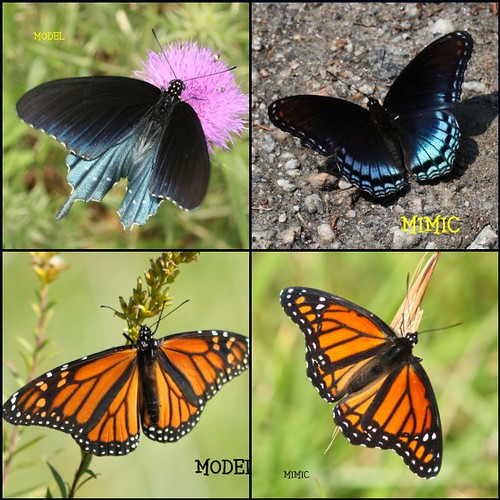It turns out that there are a number of bugs that immitate these colors but don't have a sting. The color pattern of yellow and black is sufficient to scare away many predators. The hummingbird moth is one such creature. The moth mimics the colors of it's model the bumble bee. It's all bluff and bluster for when the moth is threatened it flees!

There are other examples in nature of defensive mimicry. See photograph above. In butterflies we have the red spotted purple which mimics the beautiful Pipevine Swallowtail and there is the Viceroy which mimics the queen beauty of them all, the Monarch. In these cases the model carries a toxin that repels predators. By mimicing the coloring of the model these butterflies are able to scare away predators just by looking beautiful!
Mimicry is a fascinating adaptive tactic of wildlife that supports the notion of natural selection. It is found throughout the animal kingdom.





No comments:
Post a Comment